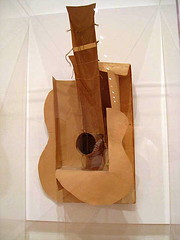Reading the comments on Friday’s post was very interesting. It’s amazing what happens when you take things out of context!
For the record, the object in question is a sculpture by Pablo Picasso. It hangs in the Museum of Modern Art in New York.
Because society (and art lovers) have decided that Picasso works are rare, remarkable, and valuable, the object is worth millions. If I recreated the artwork, it would be worth much less.
How to charge for your freelance work?
I asked this question not to make a point about art, but to make one about value. There was a discussion in a forum I belong to about what to charge. Someone was hired to fix a problem, estimated at three days worth of work. He solved it in half an hour. The question was what was that worth.
Now, obviously, payment terms should have been decided in advance, but the responses were interesting.
“If you work half an hour, charge for half an hour”
“Contract work is hourly”
“Maybe if you charge less, they will like you and hire you again.”
My argument? If you’re charging by the hour, you’re short-changing yourself.
Knowledge for money, not time
Here’s another example. Picasso took “a shovel, a piece of twisted wicker, two forks, a gas spigot, screw nuts and a spike.” He put the pieces together and then cast them in bronze to make a bird. Maybe a few hours work? It sold at Sotheby’s for $19,193,000!! Imagine if he’d charged $50 an hour for that bird sculpture. Or the guitar.
Time isn’t the point. Expertise, knowledge, and value of the work is. You’ve got to charge for value – what they’ve saved by getting you to fix the problem, or what they’ve earned by getting you to change something.
Picasso’s own take on time and talent
Am I right? Do you agree? Anyone want to join me at the museum to see for yourself?


